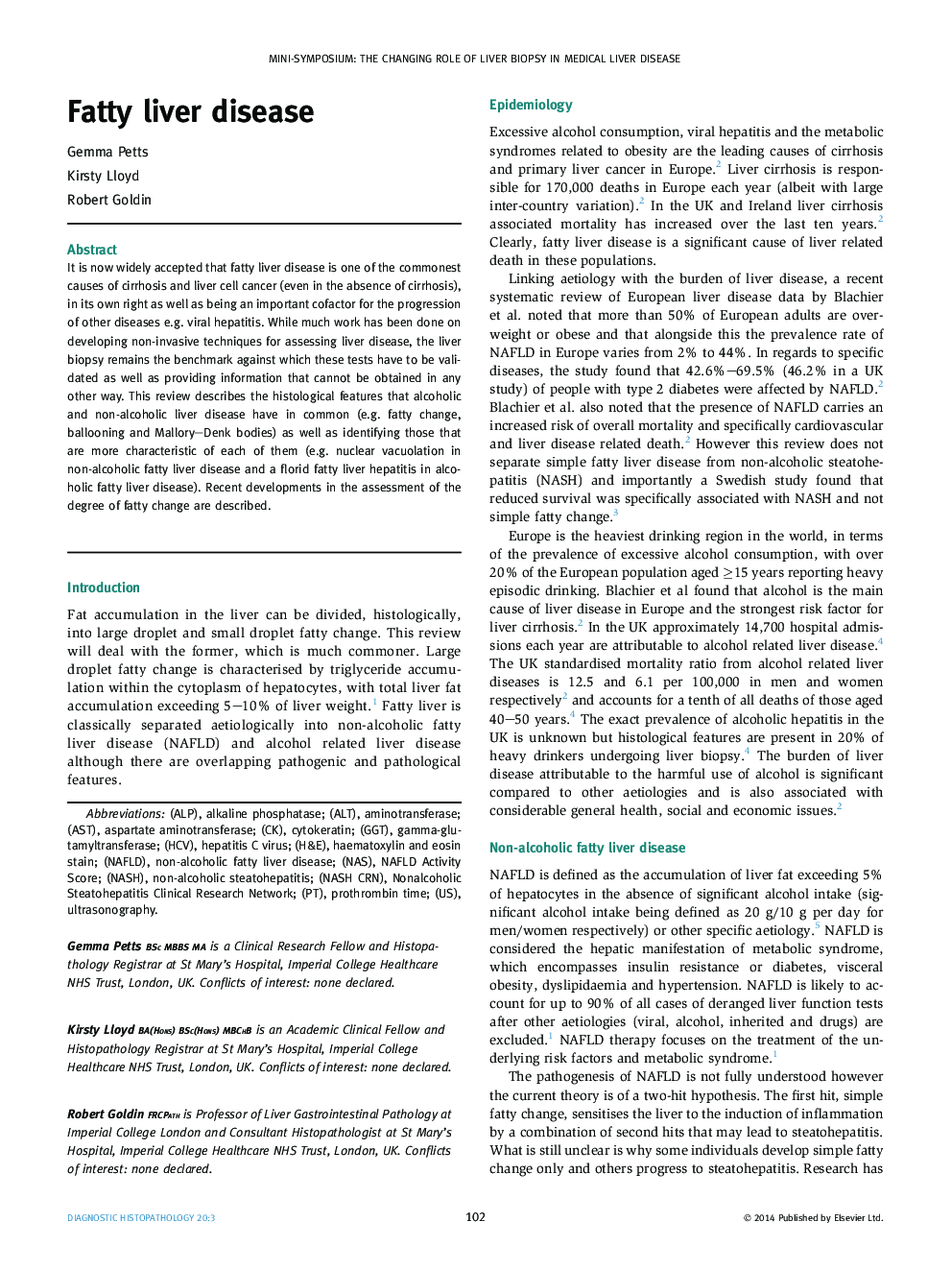| Article ID | Journal | Published Year | Pages | File Type |
|---|---|---|---|---|
| 4131112 | Diagnostic Histopathology | 2014 | 7 Pages |
It is now widely accepted that fatty liver disease is one of the commonest causes of cirrhosis and liver cell cancer (even in the absence of cirrhosis), in its own right as well as being an important cofactor for the progression of other diseases e.g. viral hepatitis. While much work has been done on developing non-invasive techniques for assessing liver disease, the liver biopsy remains the benchmark against which these tests have to be validated as well as providing information that cannot be obtained in any other way. This review describes the histological features that alcoholic and non-alcoholic liver disease have in common (e.g. fatty change, ballooning and Mallory–Denk bodies) as well as identifying those that are more characteristic of each of them (e.g. nuclear vacuolation in non-alcoholic fatty liver disease and a florid fatty liver hepatitis in alcoholic fatty liver disease). Recent developments in the assessment of the degree of fatty change are described.
